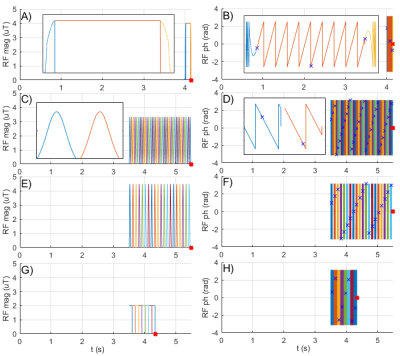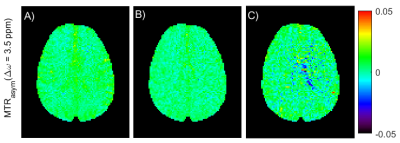Kai Herz1,2, Sebastian Mueller1, Maxim Zaitsev3, Linda Knutsson4,5, Jinyuan Zhou5, Phillip Zhe Sun6, Peter van Zijl5,7, Klaus Scheffler1,2, and Moritz Zaiss1,8
1Magnetic Resonance Center, MPI for Biological Cybernetics, Tuebingen, Germany, 2Biomedical Magnetic Resonance, University of Tuebingen, Tuebingen, Germany, 3Center for Medical Physics and Biomedical Engineering, Medical University of Vienna, Vienna, Austria, 4Medical Radiation Physics, Lund University, Lund, Sweden, 5Russell H. Morgan Department of Radiology and Radiological Science, Johns Hopkins University School of Medicine, Baltimore, MD, United States, 6Yerkes Imaging Center, Emory University, Atlanta, GA, United States, 7F.M. Kirby Research Center for Functional Brain Imaging, Kennedy Krieger Institute, Baltimore, MD, United States, 8Neuroradiology, Friedrich‐Alexander Universität Erlangen‐Nuernberg, Erlangen, Germany
1Magnetic Resonance Center, MPI for Biological Cybernetics, Tuebingen, Germany, 2Biomedical Magnetic Resonance, University of Tuebingen, Tuebingen, Germany, 3Center for Medical Physics and Biomedical Engineering, Medical University of Vienna, Vienna, Austria, 4Medical Radiation Physics, Lund University, Lund, Sweden, 5Russell H. Morgan Department of Radiology and Radiological Science, Johns Hopkins University School of Medicine, Baltimore, MD, United States, 6Yerkes Imaging Center, Emory University, Atlanta, GA, United States, 7F.M. Kirby Research Center for Functional Brain Imaging, Kennedy Krieger Institute, Baltimore, MD, United States, 8Neuroradiology, Friedrich‐Alexander Universität Erlangen‐Nuernberg, Erlangen, Germany
Pulseq-CEST enables a straightforward
approach to standardize, share, simulate and measure different CEST preparation
schemes, which are inherently completely defined.

RF magnitude A) and phase B) of
the spin-lock saturation at 0.6 ppm. The frequency modulation can
be seen from the changing phase in the zoomed plot (black rectangle). The red dot
marks the beginning of the readout period. RF magnitude (C,E,G) and phase
(D,F,H) during three different APTw protocols: APTw_3T_001 (C,D), APTw_3T_002
(E,F) and APTw_3T_003 (G, H) all with B1,cwpe = 2 µT and recovery
time, Trec = 3.5 s. In C) and D), a zoomed graph
for two RF pulses is shown in the black rectangles. The phase accumulation due
to the off-resonance of the RF pulses is taken into account (D).
